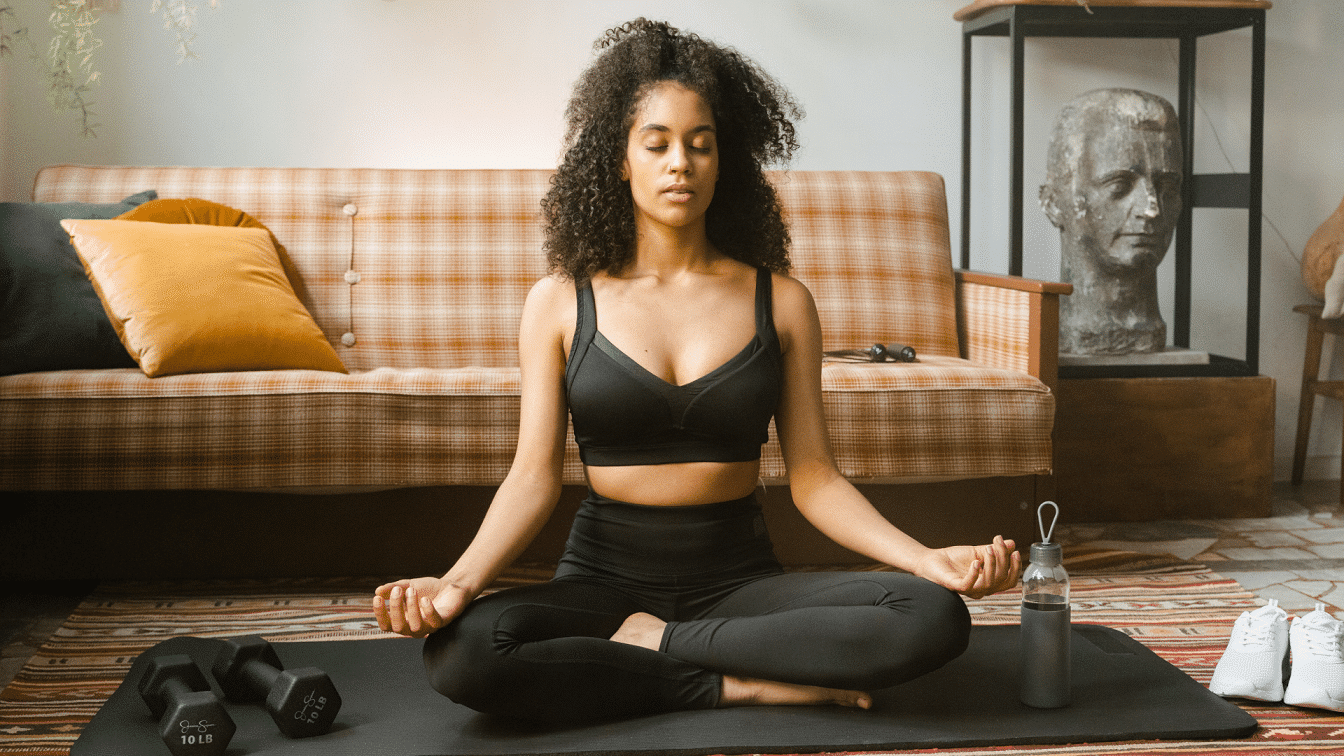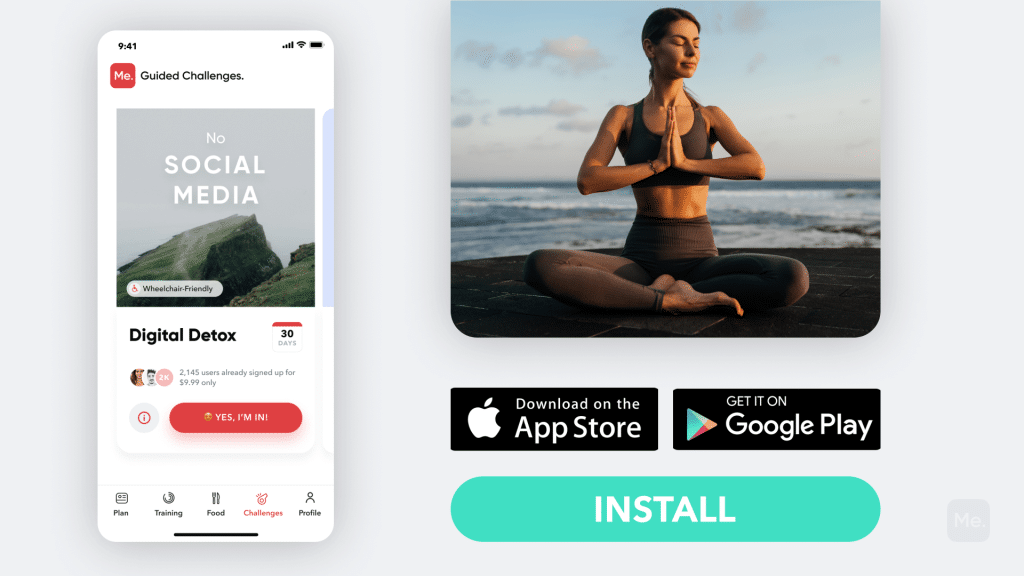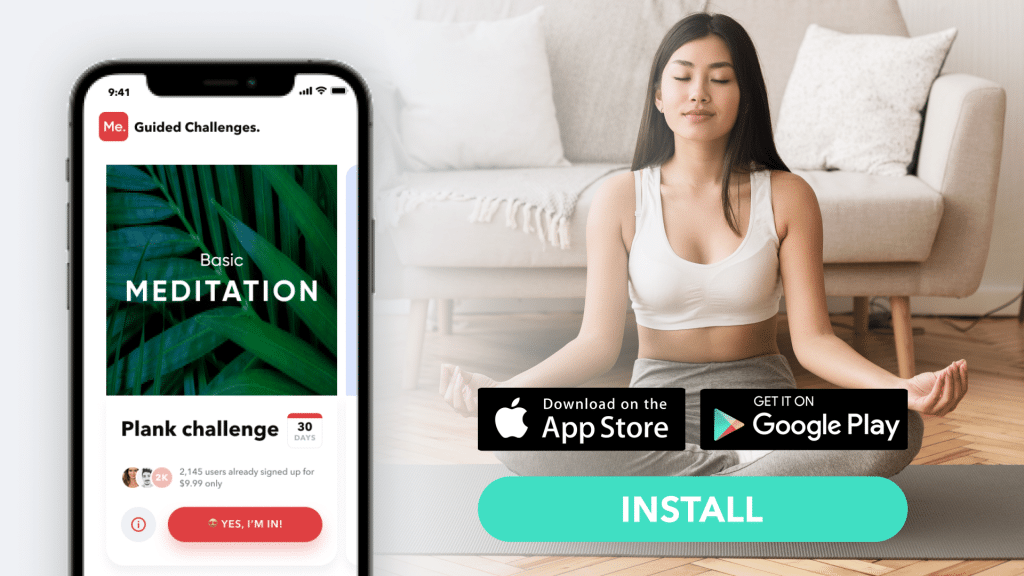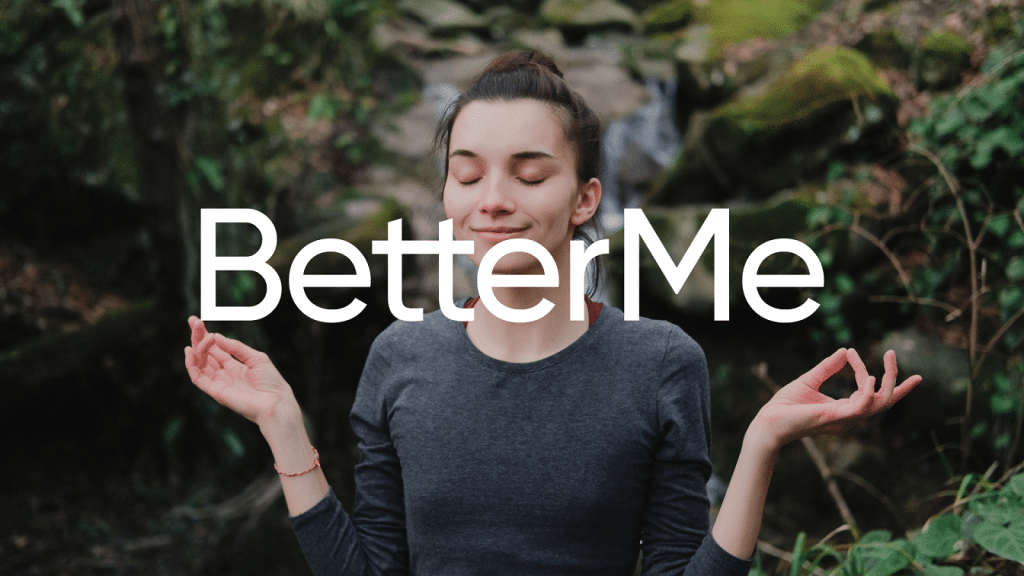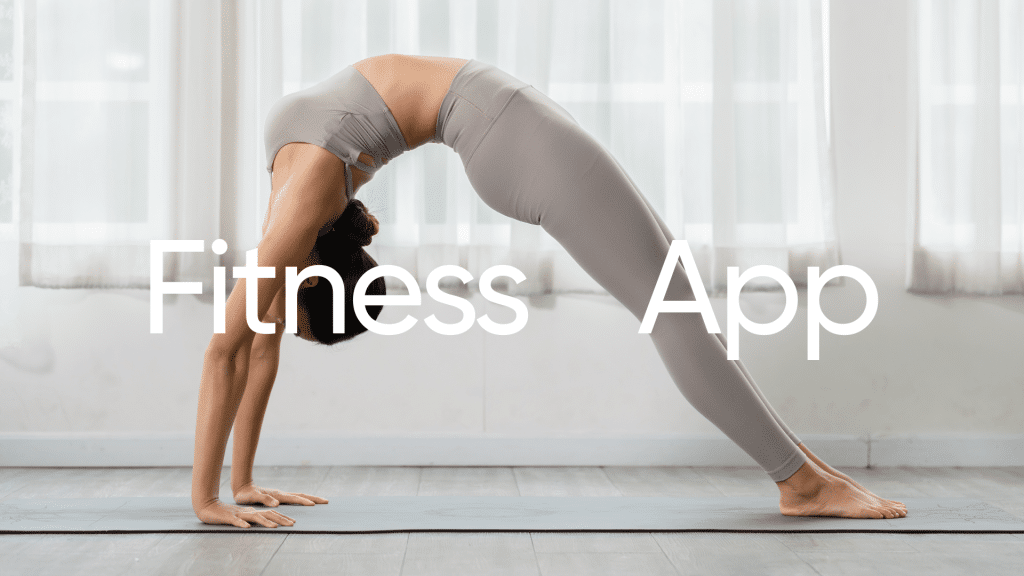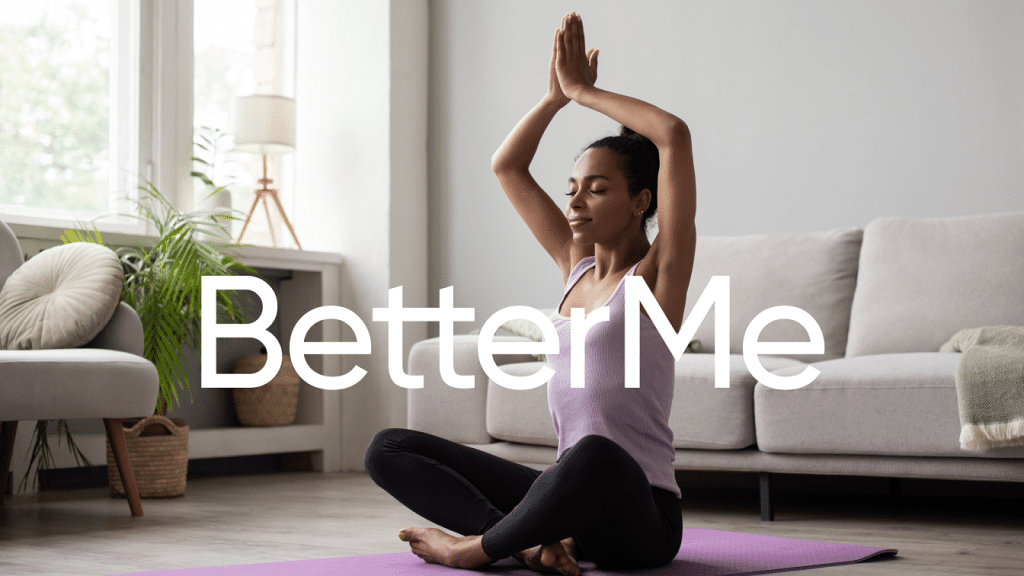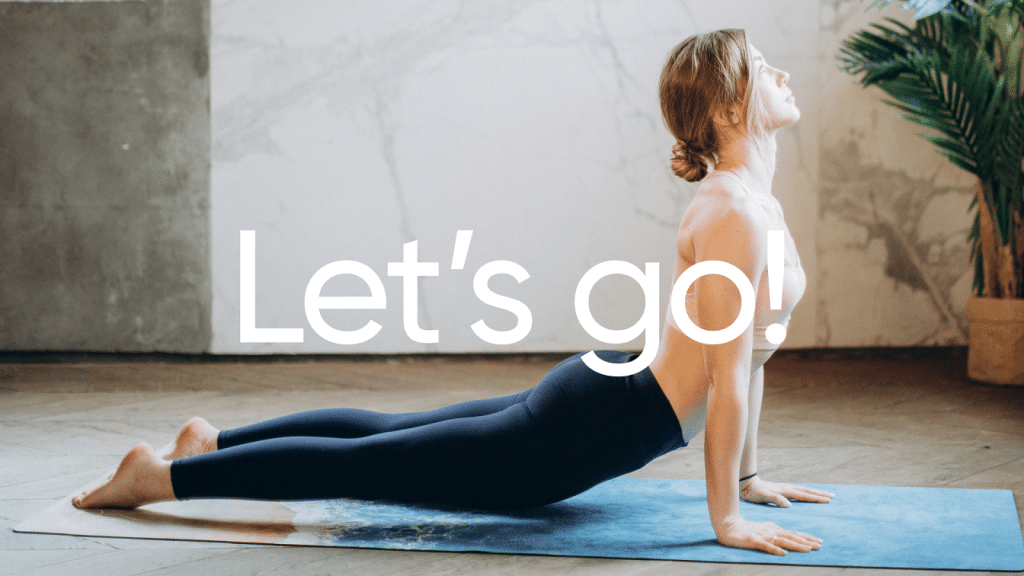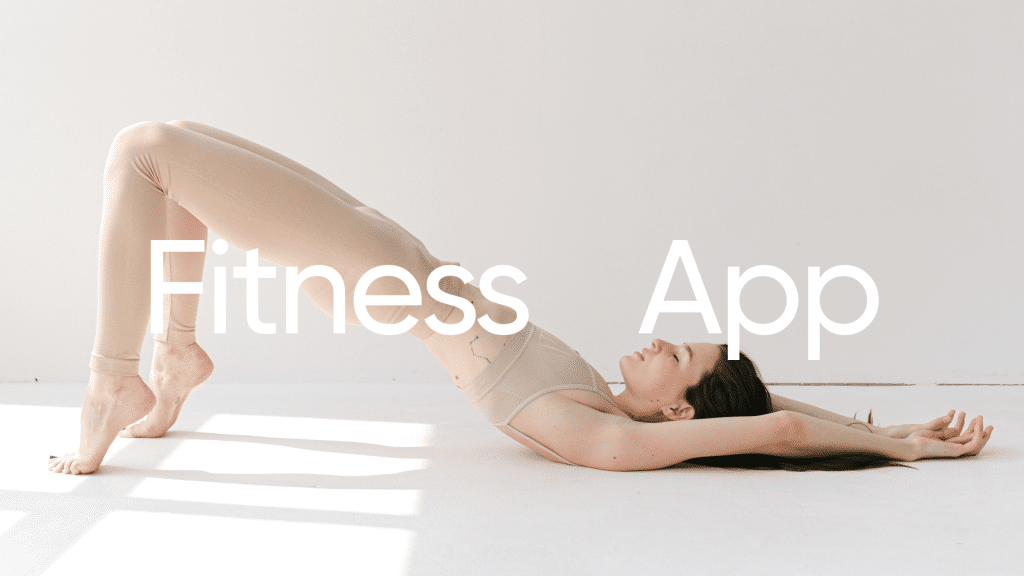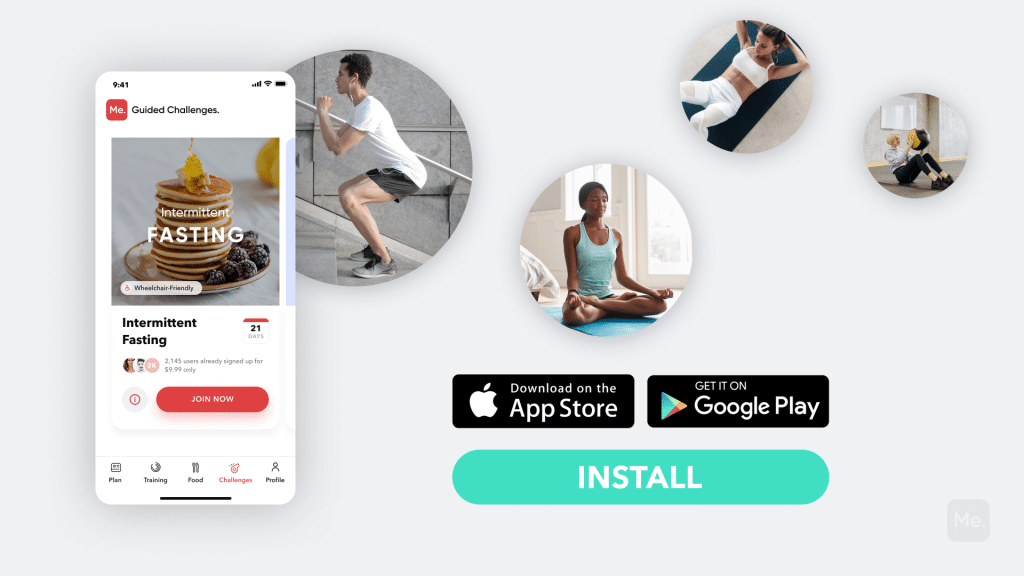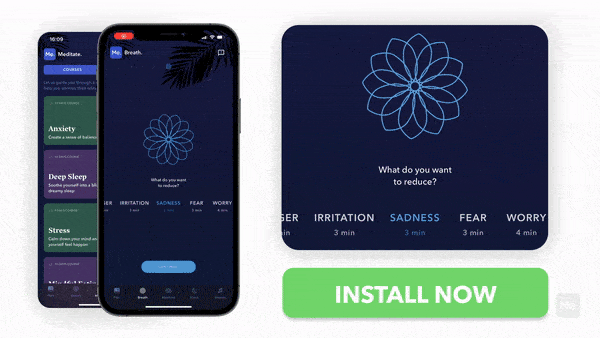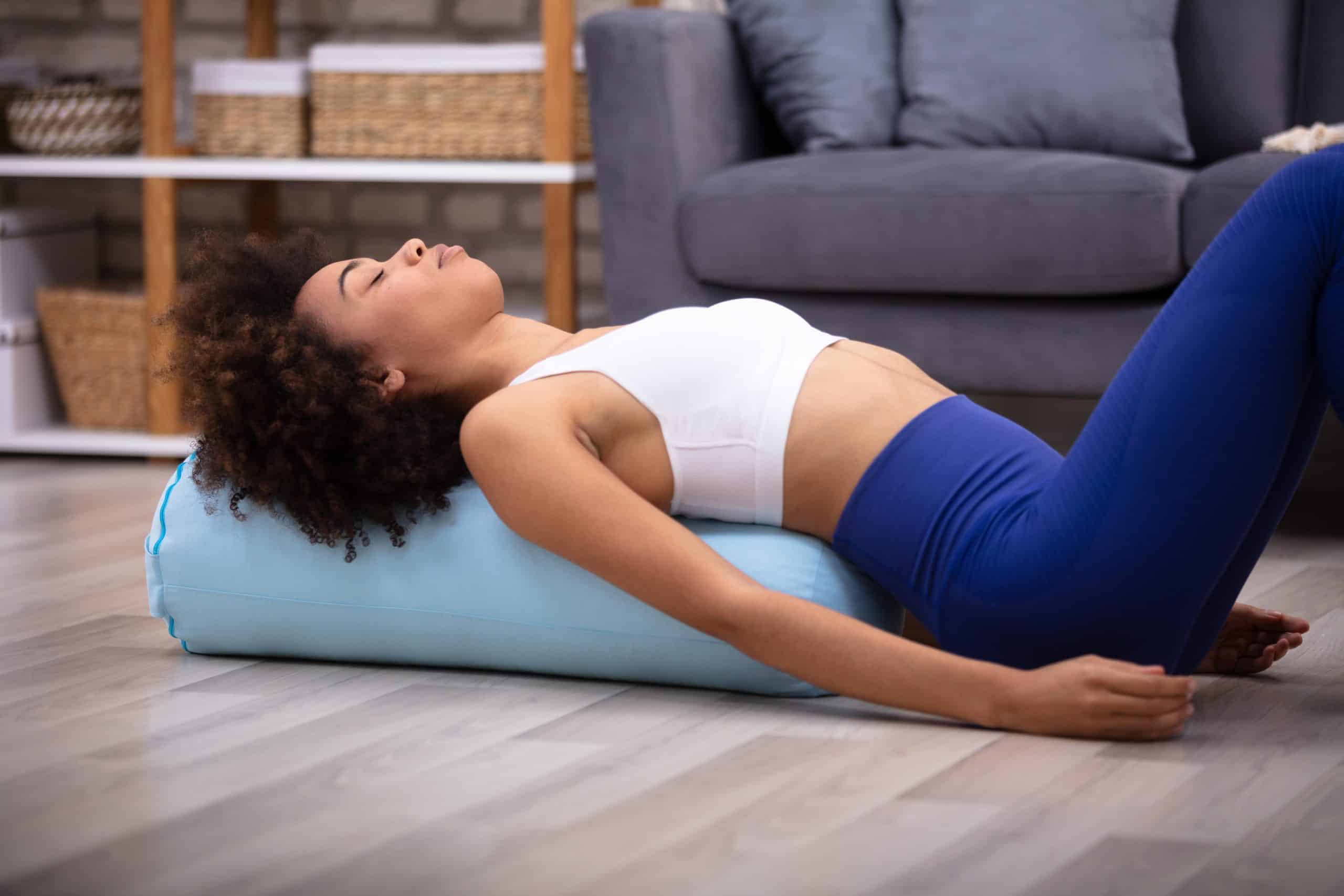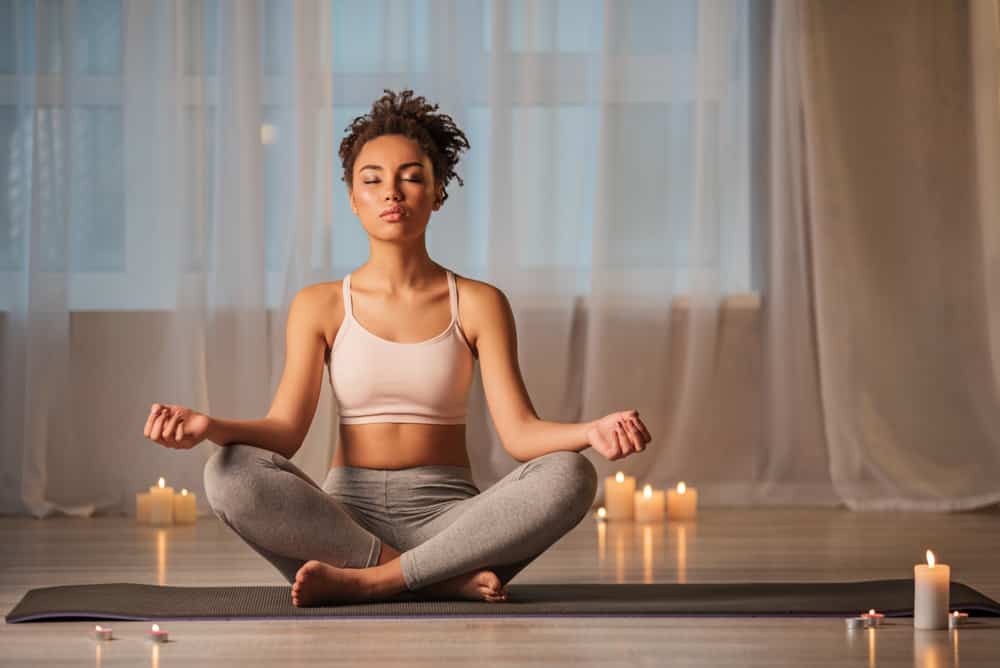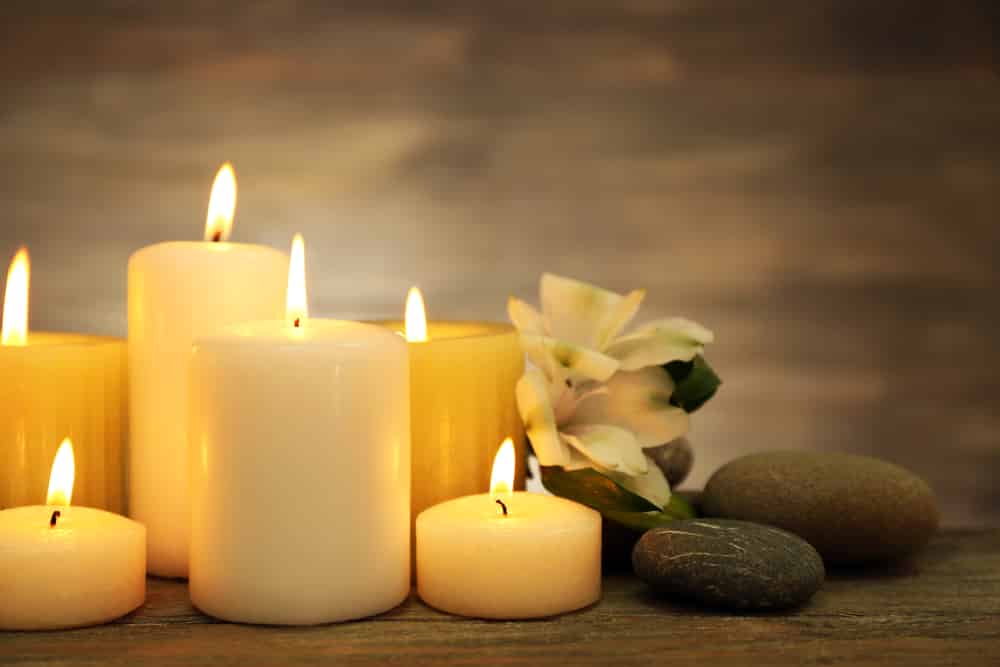Learning How To Meditate As A Way Of Fighting Stress
No matter what country you live in, what job you have and how many hours you log at work, there is one thing that is common for a lot of people in this day and age, and that thing is stress. Stress presents a huge problem for both your mind and body. It may lead to different health conditions, including physical and mental. It may also cause excessive eating, which results in weight gain, and if ignored, even obesity, which increases the risk of other serious diseases. That is why, in order to prevent that, you need to learn how to cope with your stress. You should at any cost avoid such unhealthy habits as smoking and drinking. They might seem to help you unwind and get away from it all, but they don’t actually even out your stress levels or put your anxiety at ease (1). Some of the tried-and-true ways which can help you de-stress are eating healthy, bumping up your physical activity, getting enough shut-eye, carving out more time for hobbies and “you time”, understanding that each problem has a solution, and practicing relaxation techniques, such as yoga and meditation (16). The latter has proven to be quite effective not only at decreasing the stress levels, but also at improving your overall wellness (11). If you don’t know how to meditate, fear not, and read on. In this article, you will learn step by step how to meditate properly, taking into account your location, mental state, posture and breathing, and learning how to exit your meditation and ease back into reality. You will also find out more about useful tips on how to improve the results of your meditation.
How To Meditate: How To Choose The Best Location?
First things first, if you want to learn how to meditate properly, you need to choose where to practice meditation. If it is noisy at home, or you don’t get to spend much time there, there are a lot of different options for you, so you need to choose the place where you feel at ease. If you are wrapped up in work during the day and have no time for a full meditation session in the evening, you can try to incorporate small meditative pauses into your routine. So, here are some of the locations where you can meditate:
-
In The Car Or Public Transport
Not all meditation sessions take a lot of time. If you are an extreme workaholic with an overpacked schedule who can’t squeeze in a moment of peace and quiet into your day, you can still reach into the crevices of your psyche on your way to work, from work, or basically any other place. If you are stuck in traffic in your car, or riding a bus, try to sit as comfortable as possible, and if needed, put in your earphones to block the outside noise. This option is a great choice for people who want every minute of their day to be productive but spend a lot of time traveling to their destination. You can meditate for up to 10 or 15 minutes. If not, even a few minutes a day are enough to improve your wellness (12), take some load off your shoulders, and refresh your mind.
Read More: Mantra Meditation: Empowering Words That’ll Put You Into A Better Headspace
-
In Churches Or Temples
This option is the best for those who live in a noisy environment. You can break away from the tumult of your life and find respite in churches or temples, as it is usually quiet and peaceful there. People are busy with praying, so you will blend in perfectly. The only con here is that it may be not as comfortable as at home, but it is still quite a nice option for people who live in big bustling cities.
-
Parks
Parks are a great place for meditation. It is filled with the spirit of nature and provides a lot of space where you can zen out for a couple of minutes. You can sit on the bench or on the grass. For more back support, you can sit near a tree and lean on it a bit. Another benefit of sitting near trees is that they create a natural shadow, and it prevents the sunlight from shining directly on your face and distracting you.
-
Bookstores And Libraries
These two temples of knowledge are very calming and have a nice meditative vibe. They are never crowded, so you’ll always find a place where you can sit back, free your mind of all the buzzing thoughts and simply bliss out.
These were meditation spots for busy people who live in a noisy environment. However, if you live in a quiet household, or have more free time on your hands to get closer to the nature, here are some tips that may help you choose and organize your meditation spot for a better experience:
-
Make Sure You Won’t Be Disturbed
Everyone has their favorite corner in the house where they tend to spend more time. If you live with someone, try to avoid those places when you want to sink into a meditative state. The best option is to tell your housemates about your meditative time and ask to be quiet or choose a time when they are going out and won’t be able to disturb your meditation session.
-
Out Pf Sight, Out Of Mind
A home office is usually a place that radiates stress vibes, try to get as far from it as possible. When you are entering the meditative state, your mind may wander, and if you stumble upon that place, your thoughts may focus on your work and problems, thus blocking the relaxation.
-
As Quiet As Possible
Finding a quiet place at home may be difficult if you live in a big busy city. There will always be background noises, such as the hum of traffic, children’s laughter on the street, etc. As it is almost impossible to avoid all the noise, try to choose the quietest place, where you will not be able to hear any audible conversations or any other recognizable noises, as they can knock you out of the meditative state, especially, if you haven’t completely entered it yet.
-
Choose Proper Lighting
You may have seen pictures of people meditating in the sun or in very well-lit studios. That is not the best approach if you are only starting to get into meditation. If you choose a spot that is located under direct sunlight, it may be too distracting, and on the contrary, if the place is too dark you may accidentally fall asleep. Adjust the lighting to your mood, if you feel tired and sleepy, add some more light, by turning on the lamp behind you, so that it won’t shine into your face.
-
Get Some Fresh Air
As you may already know, breathing is highly important when it comes to meditation. That is why you mustn’t start your meditation session in a stuffy and musty room. If your neighborhood is quiet, you can open the window during the session, if not, be sure to prepare the room before meditation, by letting some air into it.
-
Closer To Nature
It is ok if you don’t live near the forest or park and have no garden in your backyard. You can bring nature with you into your room in the form of a plant, a vase with flowers or a couple of stones. You don’t have to concentrate on them while meditating. Objects of nature have a special vibe and energy and having some around may promote a more pleasant and calming experience, while helping you enter the meditative state.
With stress being a constant presence in our lives, taking time to process emotions, decompress and get into the right frame of mind is absolutely crucial. With BetterMe: Meditation & Sleep app your mental health is in good hands! Start using it now!
How To meditate: Which Posture Is The Best For You?
Just as the location where you meditate, your posture may either add to the feeling of relaxation and calmness or distract you and disturb your meditation. There are a lot of different positions suitable for meditation. To choose the one that will fit you perfectly you need to try which one is more comfortable. If sitting in a popular lotus pose makes your back and knees hurt and legs go numb, don’t force yourself, and switch to either sitting or lying. Here are some of the most common meditation positions:
Seated Positions
Seated meditation is one of the most popular positions, as it can be done almost anywhere – in your office, in the park, in your car, at home, etc. It doesn’t matter if you do it on the floor, in a chair or on the sofa. Remember that your back should be straight, yet relaxed, head and neck aligned with your spine and your hands should be planted on your legs. So, here are two sitting positions which you may use for the meditation:
-
Chair Or Sofa
One of the simplest and most comfortable positions is sitting in a chair or on a sofa. It allows you to relax your body and mind, while providing you a back support. Sit with your feet on the ground, without crossing your legs. You can rest your arms either on the armrest or on your legs, whatever feels more comfortable. In order to keep your back straight without straining it, you can use a cushion. Put it behind your lower back, keeping your head in line with back without extra effort.
-
On The Floor
If you feel comfortable sitting in a cross-legged position on the floor – go for it. To soften the place where you sit a little bit, use a cushion or a folded blanket. Sit on it in such a way, that your knees are lower than your hips. For greater back support sit near the wall, bed, couch, or counter. Place a pillow behind your lower back, so that when you lean, your back is straight. If you feel like sitting cross-legged strains your knees, you can extend your legs in front of you.
Lying Positions
The lying meditation is usually a go-to position for beginners. While you tend to be more attentive and alert when you are sitting upright, lying down usually works better for relaxation. The only problem here is that you may accidentally fall asleep, so you need to make sure that you have an alarm set to finish your meditation and return to your routine. There are two lying meditation positions, which are:
-
Simple Lying Straight
If you feel uncomfortable sitting due to back or knee pain, you can lie down. Such a meditation position may turn out to be even more effective than the other ones, as it allows you to relax all your muscles. All you need is to lie down on your back with your feet hip-width apart, and arms stretched alongside your body, palms up. Your hands and feet should be relaxed. In yoga, this pose comes last, performed at the end of the class, and it is called a corpse pose.
-
Lying With Additional Support
If lying down straight causes discomfort, you can adjust this position, by adding more support to your back, knees, and neck. Place a thin pillow under your head, and either bend your knees, placing your feet flat on the ground, or rest your bent knees on a cushion to elevate them. It will provide additional support and protection for your back and prevent any strain.
Standing Positions
Mastering standing meditation may be very useful if you live an extremely busy life. You can practice this type of meditation when you are standing in line in the grocery shop, waiting for the bus or an elevator to arrive, etc. It is also one of the ways how to meditate at work. As meditation is not about quantity, but about quality, even a few minutes of meditation a day will make a big difference (6). Here are three variations of a standing meditation position:
-
Hands On Belly Standing Position
Stand with your feet hip-width apart, toes slightly pointing outwards. Softly bend your knees and rest your hands on your belly, right hand over left. Try to feel how your breath moves through your body. Imagine your energy circulating through each body cell and then lifting out through the crown of your head with each inhale.
-
Holding A Ball Standing Position
Stand with your feet a little bit narrower than shoulder-width apart. Slightly bend your knees, keeping your hips and back relaxed. Lift your arms in front of you, as if you are holding a beach ball with your hands. Keep them relaxed, and slightly extend your fingers. Try to relax as much as possible, while still maintaining the standing posture.
-
Hands On The Sides Standing Position
Stand with your legs a little bit wider than hip-width apart. Slightly relax your knees, neck, and shoulders, letting your arms hang by your sides. Feel how your weight is distributed in your body. Imagine how with each inhale air fills your body with oxygen, and with each exhale you breathe out the carbon dioxide. You can imagine the air you breathe in and out as a ray of light, a stream of water, or just as a sensation.
Read More: Taoist Meditation: Delve Inside Yourself And Discover Your Innate Nature
Walking Position
You may have experienced a thoughtless state when you were walking in the park or on the street. Meditation is possible not only when you sit, lie, or stand still, but also when you are on the move. It doesn’t mean that you should walk like a zombie with your eyes closed. The main concept of a walking meditation is that you focus on what is around you, rather than what is going on in your head. The meditative walk can be performed anywhere, whether it’s a countryside or a big city. Pick a pace that suits you the best and start to walk. As you go, notice how you move, pay attention to your posture and the way you’re carrying yourself. Try to enjoy the feeling of movement. Observe your gait without focusing on it or trying to change the way you are walking.
How To Meditate: How To Breathe Properly?
Breathing is one of the most important factors in meditation. To learn how to meditate properly, you need to choose the breathing technique which would be the most effective at helping you immerse into the meditative state. There are a lot of different meditation breathing techniques which you can use separately or in combination, so, here are some of the most popular ones:
-
Equal Breathing
This technique can help you focus on your breath and let go of all the thoughts thar are surging through your mind. Get into a comfortable position, which you have probably chosen by now, and focus on how you breathe. You can leave your eyes open or close them. Inhale for 4 seconds and then exhale for the same amount of time. You should breathe in and out through your nose. If you feel like this is too simple for you, try to increase the time to 6 or 8 seconds.
-
Abdominal Breathing
This breathing technique will help you learn how to control and understand your breath. If you feel like it doesn’t come naturally to you at first, fear not, as practice can help you master this technique with time. Rest one hand on your chest and the other on your stomach. Take a deep breath through your nose. Involve your diaphragm and belly in that inhale, so that you fill your lungs with air, creating a slight stretching sensation. Now slowly breathe out. Regular practice of meditation breathing may help you reduce the heart rate and blood pressure (8).
-
4-7-8 Breathing
This breathing technique can help you fight anxiety and fall asleep faster. It may help you gain control over your breath and can be quite effective at making you enter the state of meditation. Get into a comfortable position and place the tip of your tongue on the gum right behind your top front teeth. Breathe in through your nose for 4 seconds. Hold your breath for 7 seconds and then slowly breathe out for 8 seconds. If you feel like it is difficult to perform this technique, you can adjust it by shortening the time, while preserving the pattern. That way, you can inhale for 2 seconds, hold your breath for 3.5 seconds, and then exhale for 4 seconds. Regular performance of this technique guarantees better results (7).
-
Alternate Nostril Breathing
This breathing technique comes from yoga and as multiple studies show may not only reduce your blood pressure (2) but also balance out the work of your brain (4). It has also shown a revitalizing effect and may make you feel refreshed and energized. Sit in a comfortable position and use your thumb to close your right nostril. Take a deep breath through your left nostril and when your lungs are filled with air, release your right nostril and close the left with your ring finger of the same hand. Repeat for a couple of minutes, and then switch, so that you would breathe in through the right nostril and exhale through the left. You should spend an equal amount of time on exhaling and inhaling through both of your nostrils.
-
Skull-Shining Breath
Like alternate nostril breathing, the skull-shining breathing technique has its roots in yoga. It is perfect for morning meditation as it will help you warm-up your body, wake up the brain and boost your energy circulation. For this one, you will need to sit in an upright position, with your back straight and your hands on your knees. Slowly breathe in through your nose. Then flex your lower abdomen to powerfully breathe out through your nose. During the performance of this technique, you should focus on exhales, as the inhales will happen naturally by themselves. Continue your forceful exhales, gradually increasing your pace.
Something tells us you often forget to put all the everyday hustle and bustle on hold and simply concentrate on yourself. It’s time to straighten out your priorities! Take a moment to heal, process your emotions, ground yourself, release all the pent-up tension and recharge with the BetterMe: Meditation & Sleep app before getting back into the race of life!
How To Properly Exit The Meditative State?
The result of your meditation depends not only on how the session goes, but also on how you end it. Imagine that you are sitting relaxed and meditate, and when you feel like it is time to end your session you rapidly stand up, look at your phone, realize that you are going to be late somewhere if you don’t hurry right now, and instantly get back to your business. Of course, there still will be a positive effect from the meditation session, but such an abrupt end and rapid exit from your meditative state doesn’t promise a lasting calmness of mind and relaxation. That is why, besides learning how to meditate properly, you should also learn how to end your meditation. So, here are some of the recommendations on how to exit your meditation session in the best way, leaving you with a clear mind and feeling of refreshment:
-
Help Your Eyes
If you were meditating with your eyes closed, rapidly opening them may feel as if someone suddenly pointed a lighter in your face. That is why start off by gently massaging your eyes over your eyelids for a couple of seconds, and then perform an eye exercise, where you look in different directions and then draw a big circle with them.
-
Switch Your Focus
Shift your attention from the inside to the outside. Concentrate on your body, focus on how you feel, look around the room, activate your hearing, feel how the meditation slowly comes to its end.
-
Breathe
Take a deep breath and then slowly exhale. Unlike the breathing technique that you used to enter the state of meditation, this should bring your awareness to the outside world and present. Its goal is to help you “wake up” and fill you with energy.
-
Add Some Movement
First gently move your upper body, from your head to your neck, shoulders, and arms. Slightly rotate or twist them, feeling how each muscle is waking up. Rub your hands together to create a tingling sensation. Then softly move your lower body, slightly stretching the muscles on your legs, ankles, feet, and finally your toes. It will gradually increase the blood flow in your body, preparing you to return to your everyday movement.
-
Adjust Your Clothing
As you meditate, your body is relaxed, and your temperature may drop or rise. Adjust your outfit by adding or taking off a layer of clothes if needed.
-
Listen To Your Thoughts
Just like you tried to ignore your thoughts while learning how to meditate, now that you are returning to the “real” world, you should start listening to them.
How To Meditate: Tips For Better Meditative Experience And Results
If you have followed all the instructions so far, you should be able to enter the meditative state properly and end your meditation in the right way. That is great, as regular meditation can bring you a lot of benefits. Numerous researches have proven that meditation may prevent cardiovascular diseases (9), help you fall asleep (19), help control food cravings and fight addictions (15, 14), may reduce age-related memory loss (18), adds to the prevention of Alzheimer’s disease (17), helps to fight depression (3, 20), etc. However, if you feel like it is a bit difficult for you to start meditating, the following tips will help you with entering the meditative state and improving your overall experience with meditation:
-
Spend Only A Couple Of Minutes On Your Meditation At First
It may sound very easy and insignificant, especially if you decided that meditation should last at least 10 minutes, but if you find it difficult to start a meditation at first, only a few minutes a day for a week will be enough to make you feel better. With time you can gradually increase the amount of meditation time. So, don’t be afraid to start small.
-
Try Meditating After You Wake Up
You probably have a busy life, and if you don’t spend your whole day at work, may get lost in an everyday routine. Stating that you will meditate every day is great, but people often tend to forget about it. That is why, when you wake up, first thing in the morning (10) drink a glass of water and spend a couple of minutes on meditation.
-
Don’t Get Obsessed With The Details
Although previously in this article you found out what seems to be all you need to know about how to meditate, there still are some small details and little things that may bother you. Rather than getting obsessed with how to do it, just start doing it. If you feel like you are doing it wrong, don’t worry, you are not doing it wrong, and with time you will realize that. Whenever a thought pops up in your mind don’t panic, it happens all the time to everyone. You are not a robot, so it is only natural that you always think about something. Meditation is not about your mind going completely blank, it is about learning how to understand yourself, your thoughts, feelings, and emotions.
-
Focus On Your Breath
It was already mentioned that breathing is highly important when it comes to meditation. In order to dive into the meditative state, you need to focus on your breathing. Try counting your breaths. Focus on how you breathe in and out. If your mind begins to wander around, don’t despair, just return to your breath. Count the inhale as “one”, and exhale as “two”. When you reach 10 start over. And every time a thought pops up in your head simply begin counting from the start.
-
Use Background Noise
While searching the internet you may have stumbled upon the ambient music or nature sounds audio. Using it as a background noise may help you enter the meditative state faster and prevent the thoughts from bombarding you.
-
Pay Attention To Your Body
As you are getting better at following your breath, you can try focusing on your own body and sensations. Concentrate on one part of your body at a time. Start from your toes, try to understand how they feel, then move on to your feet, ankles, knees, legs and up, all the way to the top of your head (5).
Conclusion
Meditation is an undoubtedly great way of learning how to understand yourself and the world that surrounds you. It has an impressive number of health benefits for both your body and mind (13), and may relax you, helping your cleanse your mind of bad thoughts and problems. If you are new to meditation and want to learn how to meditate, then you need to pick a location where to do it first. Choose a quiet place, where you will be able to relax and won’t be disturbed by anything.
The next step is to choose a meditation position. The most important thing here is your personal comfort, so whether you sit or stand, you should be able to relax and keep the swirling thoughts at bay. One of the most important things in learning how to meditate is to breathe properly. There are a lot of different meditation breathing techniques that will help you enter the meditative state. Pick one that brings you the most relaxation and get down to meditation. Another thing that may improve your experience is a proper exit from a meditative state. Be sure to finish your meditation session smoothly to gradually return to your routine with a boosted mood and quiet mind. And if you want your results to be even better, you can follow the above-stated recommendations.
DISCLAIMER:
This article is intended for general informational purposes only and does not address individual circumstances. It is not a substitute for professional advice or help and should not be relied on to make decisions of any kind. Any action you take upon the information presented in this article is strictly at your own risk and responsibility!
SOURCES:
- 10 stress busters (2018, nhs.uk)
- Alternate-Nostril Yoga Breathing Reduced Blood Pressure While Increasing Performance in a Vigilance Test (2017, ncbi.nlm.nih.gov)
- Critical Analysis of the Efficacy of Meditation Therapies for Acute and Subacute Phase Treatment of Depressive Disorders: A Systematic Review (2015, pubmed.ncbi.nlm.nih.gov)
- EEG changes during forced alternate nostril breathing (1994, sciencedirect.com)
- How to Meditate (2019, mindful.org)
- How to Meditate (n.d., nytimes.com)
- How to use 4-7-8 breathing for anxiety (2019, medicalnewstoday.com)
- Investigating the Effect of Transcendental Meditation on Blood Pressure: A Systematic Review and Meta-Analysis (2015, pubmed.ncbi.nlm.nih.gov)
- Meditation Can Produce Beneficial Effects to Prevent Cardiovascular Disease (2014, pubmed.ncbi.nlm.nih.gov)
- Meditation for beginners (n.d., headspace.com)
- Meditation Programs for Psychological Stress and Well-Being: A Systematic Review and Meta-Analysis (2014, pubmed.ncbi.nlm.nih.gov)
- Meditation: A simple, fast way to reduce stress (2020, mayoclinic.org)
- Meditation: In Depth (2016, nccih.nih.gov)
- Mindfulness Meditation as an Intervention for Binge Eating, Emotional Eating, and Weight Loss: A Systematic Review (2014, pubmed.ncbi.nlm.nih.gov)
- Mindfulness Meditation for Alcohol Relapse Prevention: A Feasibility Pilot Study (2008, ncbi.nlm.nih.gov)
- Stress Management (2020, webmd.com)
- Stress, Meditation, and Alzheimer’s Disease Prevention: Where The Evidence Stands (2015, pubmed.ncbi.nlm.nih.gov)
- The Potential Effects of Meditation on Age-Related Cognitive Decline: A Systematic Review (2014, pubmed.ncbi.nlm.nih.gov)
- The Value of Mindfulness Meditation in the Treatment of Insomnia (2015, pubmed.ncbi.nlm.nih.gov)
- Three-year follow-up and clinical implications of a mindfulness meditation-based stress reduction intervention in the treatment of anxiety disorders (1995, sciencedirect.com)
